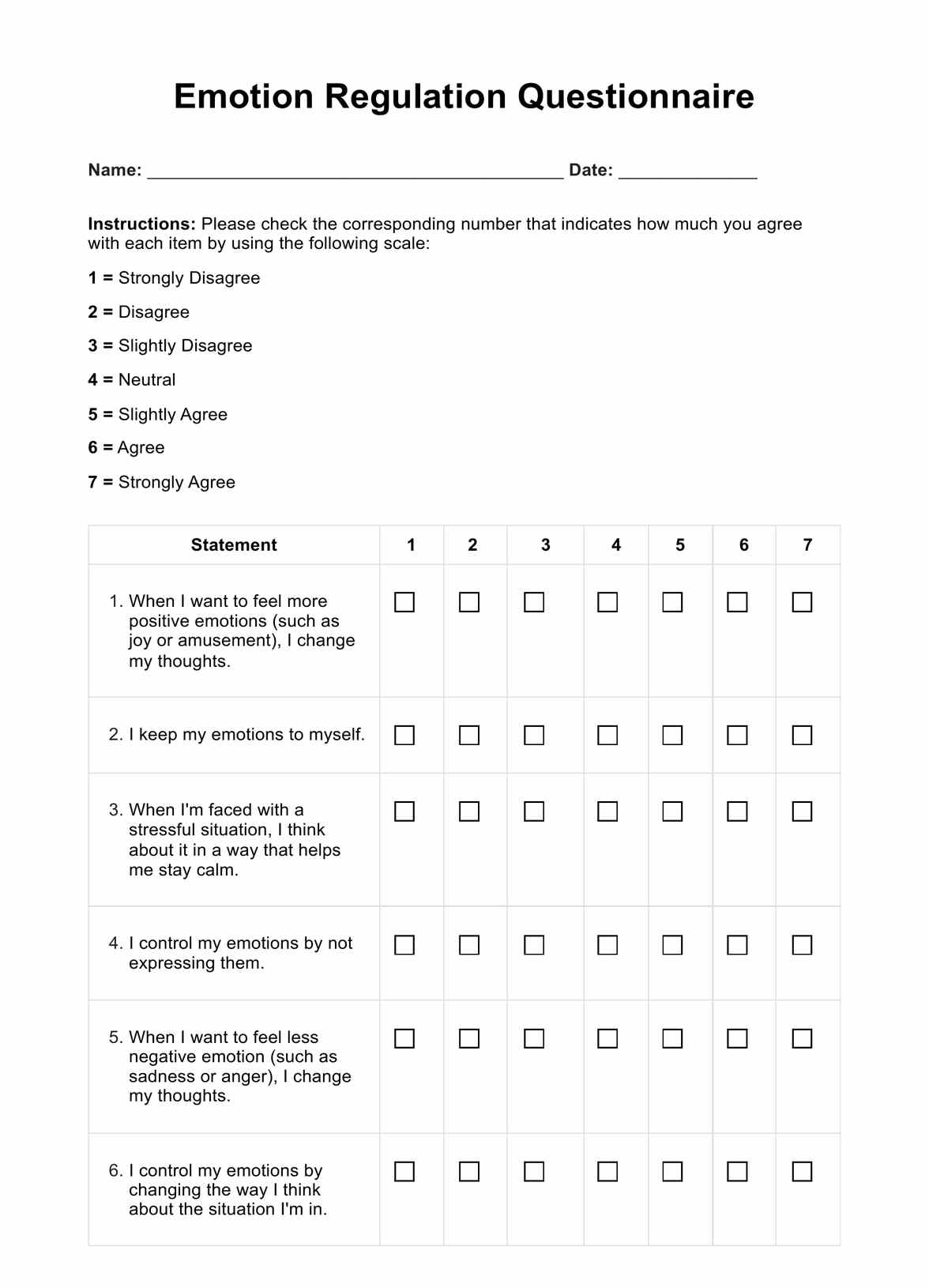The "4 R's" is a simplified, mnemonic framework often used in therapeutic settings to summarize key steps for managing intense emotions: Recognize (identifying and labeling the emotion and recognizing its triggers), Regulate (using adaptive skills to modify the emotional response, such as deep breathing or grounding techniques), Reflect (thinking critically about the situation and the feeling, often involving cognitive reappraisal), and Respond (choosing an intentional, goal-directed action rather than reacting impulsively). It's not simply about feeling less negative emotion and more positive emotion. Instead, this model helps individuals gain awareness and control over their emotional experience, moving from automatic reaction to deliberate action.

Emotion Regulation Questionnaire
Assess your client's emotion regulation strategies by using the Emotion Regulation Questionnaire (ERQ). Download our free PDF for easy access.
Emotion Regulation Questionnaire Template
Commonly asked questions
A more systematic framework for emotional regulation is often based on the Process Model of Emotion Regulation developed by James Gross, which describes five points where an individual can influence the emotional trajectory: Situation Selection (avoiding or approaching certain situations based on their emotional impact), Situation Modification (actively changing the situation once present), Attentional Deployment (directing attention away from or toward emotion-relevant aspects, e.g., distraction), Cognitive Change (reappraising the meaning of the situation, e.g., finding the silver lining), and Response Modulation (directly influencing the physiological or behavioral responses to an emotion, e.g., expressive suppression or relaxation techniques).
Emotion regulation is typically assessed through a combination of methods, including self-report questionnaires (e.g., the Emotion Regulation Questionnaire (ERQ), which gauge an individual's habitual use of specific strategies like cognitive reappraisal or expressive suppression. Clinicians also use structured or semi-structured interviews to gather detailed information about a client's emotional responses, coping mechanisms, and history of emotional crises. Additionally, behavioral tasks in a laboratory setting or physiological measures (like heart rate variability or skin conductance) can provide objective data on a person's ability to respond adaptively to emotion-eliciting stimuli.
EHR and practice management software
Get started for free
*No credit card required
Free
$0/usd
Unlimited clients
Telehealth
1GB of storage
Client portal text
Automated billing and online payments











